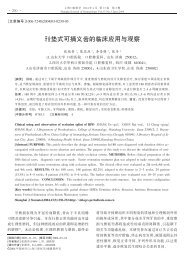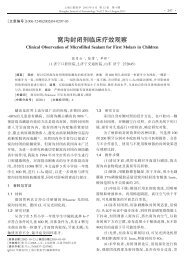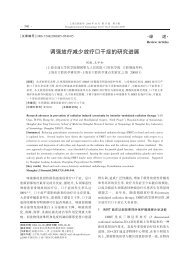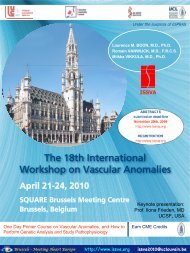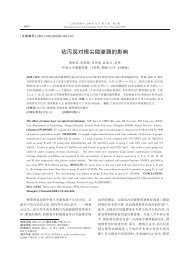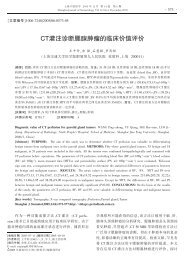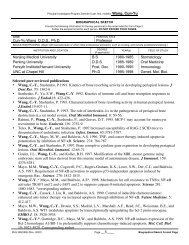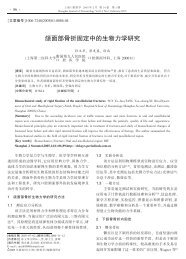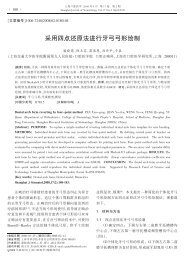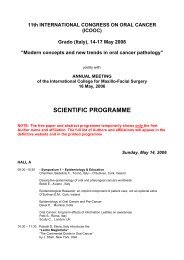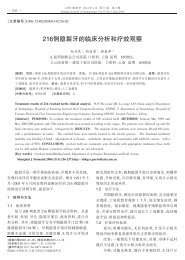core curriculum cleft lip/palate craniofacial anomalies
core curriculum cleft lip/palate craniofacial anomalies
core curriculum cleft lip/palate craniofacial anomalies
You also want an ePaper? Increase the reach of your titles
YUMPU automatically turns print PDFs into web optimized ePapers that Google loves.
Core Curriculum for Cleft Palate and other Craniofacial Anomalies<br />
2) Multiview videofluoroscopy<br />
a. A midsagittal lateral view: movement of the velum<br />
and posterior pharyngeal walls, height and length of<br />
velum, point of velar closure, and velar relationship to<br />
adenoids and posterior pharyngeal wall; posterior<br />
tongue valving<br />
b. Frontal view: lateral pharyngeal wall movement<br />
c. Basal/Towne’s view: all of the above, except vertical<br />
movement<br />
The speech/language pathologist reviews both perceived speech characteristics and<br />
physiological status of the velopharyngeal mechanism during speech production, with<br />
possible recommendations for surgical or prosthetic management, speech therapy, and/or<br />
continued monitoring of VP function. If surgical management is recommended, perceptual<br />
evaluation should occur 3-6 months following surgery, with repeat imaging studies 6-12<br />
months post management. Speech therapy for VP function should be deferred for 6-12<br />
weeks following secondary palatal management, while therapy for developmental or<br />
compensatory articulations may be resumed in 3-4 weeks.<br />
32<br />
© 2004 American Cleft Palate-Craniofacial Association



